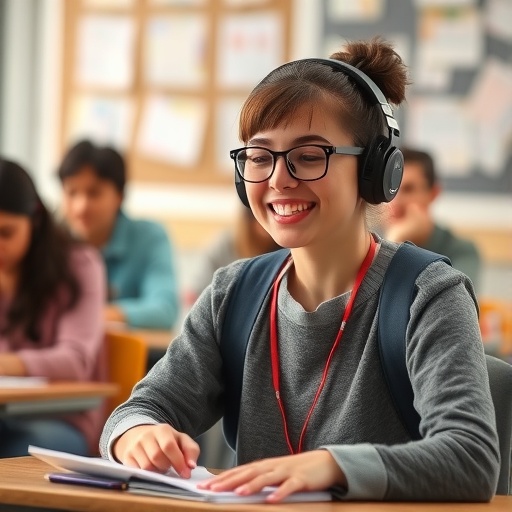The rising tide of student burnout has become an alarming trend in education systems worldwide. In a rapidly changing academic landscape, students often find themselves overwhelmed by the rising demands associated with their educational environments. A recent study explored this pressing issue, focusing on the validation of the School Burnout Inventory (SBI) as a tool for early detection and intervention in student burnout. This research not only sheds light on the intricacies of burnout among students but also proposes practical solutions for addressing this growing concern.
Educational institutions are increasingly acknowledging the significance of mental health and well-being in nurturing a conducive learning environment. Burnout, characterized by emotional exhaustion, depersonalization, and a reduced sense of accomplishment, poses grave threats to academic performance and overall well-being. The study led by Iuga and David introduces a crucial framework for measuring burnout, emphasizing the need for early identification to foster healthier academic experiences.
To contextualize the findings, it is essential to understand what constitutes student burnout. While stress is a ubiquitous experience for learners, burnout represents a more profound and detrimental state. It emerges when stressors culminate into feelings of helplessness and disengagement from academic endeavors. The School Burnout Inventory provides a structured approach to quantify this phenomenon and ascertain its prevalence among students. The challenge lies in the ability to detect these symptoms in their formative stages before they snowball into significant mental health crises.
The methodology adopted in the study is noteworthy for its rigor and comprehensiveness. Researchers employed a multifaceted approach, combining quantitative measures with qualitative insights. Through an extensive survey involving a diverse demographic of students, the SBI was validated as an effective instrument for assessing burnout levels. This validation is a critical step toward ensuring that educational institutions can reliably measure burnout and take proactive measures.
One of the pivotal contributions of this study is the establishment of cut-off scores for the SBI. These metrics serve as actionable benchmarks for educators and mental health practitioners, indicating when students may be at risk for severe burnout. By implementing these cut-off scores, schools can implement timely interventions, ranging from counseling services to academic support systems. This proactive stance could significantly mitigate the risks associated with burnout, ensuring students receive the necessary assistance when they need it most.
Moreover, the implications of early identification extend beyond individual students. Educational settings, equipped with the knowledge of burnout indicators, can cultivate a more supportive atmosphere. When schools proactively address mental health concerns, they foster a culture that prioritizes well-being alongside academic excellence. This holistic approach not only benefits students but can also enhance teacher-student dynamics and overall school morale.
As the study illustrates, teacher involvement is crucial in the pursuit of a healthier academic experience. Educators trained to recognize the signs of burnout will be better equipped to provide the support their students need. A collaborative effort, where teachers, administrators, and mental health professionals work together, can create a robust framework for imposing the findings of the research into practical applications within schools.
Furthermore, the dissemination of these findings among educational policymakers can catalyze systemic changes. Policymakers should acknowledge the critical importance of mental health in educational discourse. By advocating for policies that incorporate mental health training for educators and resources for students, they can significantly reshape the educational landscape, creating schools that prioritize well-being as much as academic achievement.
This research also opens the door for further studies exploring the cultural and environmental factors contributing to student burnout. Diverse educational models exist globally, and understanding how these differences affect student experiences can yield valuable insights. Comparative studies can inform best practices worldwide, allowing educators to adapt strategies that reflect their unique student populations effectively.
In the age of technological advancements, mental health support can also harness innovative solutions. Digital platforms and applications offering mental health resources, workshops, and peer support networks can complement traditional approaches. As students increasingly navigate their educational journeys online, integrating mental health resources into these platforms can ensure accessibility and reach.
Addressing student burnout requires continuous dialogue among stakeholders in education. Engaging students in conversations about mental health can empower them to advocate for their needs. Initiatives encouraging student feedback on well-being programs can lead to more effective interventions and foster a sense of ownership over their mental health.
In conclusion, the validation of the School Burnout Inventory presents a significant advancement in understanding and addressing student burnout. It lays the groundwork for early identification, enabling educators to create supportive environments that prioritize mental health. As educational institutions confront the realities of escalating student burnout, the insights from this study offer a beacon of hope. By integrating these findings into practice, schools can revolutionize the learning experience, ensuring that students not only thrive academically but also enjoy a fulfilling and balanced life.
Subject of Research: Student Burnout
Article Title: Validation of the School Burnout Inventory: Establishing Cut-Off Scores for Early Identification of Student Burnout
Article References:
Iuga, I.A., David, O.A. Validation of the School Burnout Inventory: Establishing Cut-Off Scores for Early Identification of Student Burnout.
School Mental Health (2025). https://doi.org/10.1007/s12310-025-09810-w
Image Credits: AI Generated
DOI:
Keywords: Student burnout, mental health, educational interventions, early identification, School Burnout Inventory




